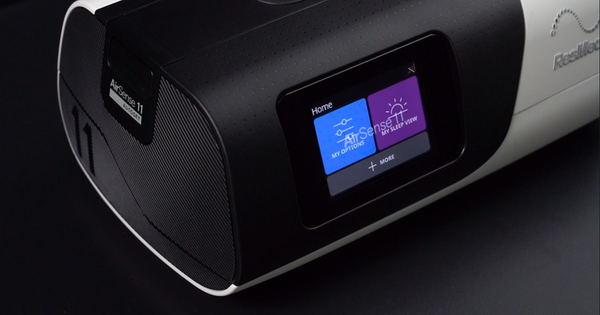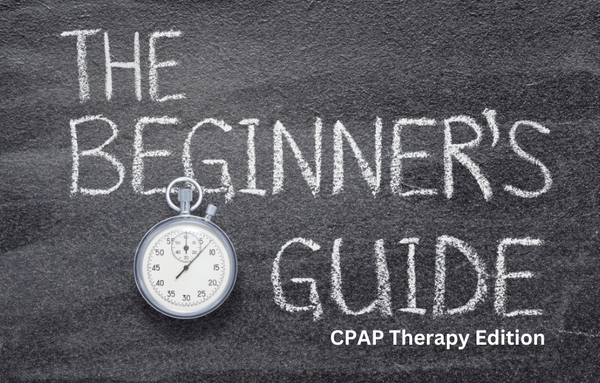Dépannage de l'aérophagie: effets secondaires CPAP
octobre 09, 2020

Are You Having Trouble With Your CPAP Machine?
As a CPAP machine user, you must be prepared to troubleshoot any issues that may potentially happen during therapy. While, for the most part, Sleep Apnea patients experience little to no CPAP side effects that does not mean they can’t happen. Being prepared is the key to successful PAP therapy.
While we’ve talked about the most common CPAP problems that users can have in a previous post, in this article we’re going to look specifically at the CPAP side effect, aerophagia. Below, we’ll explain what it is, the symptoms it causes and how to resolve it.
What is Aerophagia?
Aerophagia is a phenomenon caused by the excessive swallowing of air and a side effect that Sleep Apnea patients may experience.
When too much air has been swallowed, the air enters your stomach and intestines instead of entering the lungs, causing discomfort in the abdomen area. Generally, those who experience aerophagia during CPAP therapy note feeling some or all of the following symptoms:
- Bloating
- Heartburn and acid reflux
- Nausea
- Stomach aches and cramps
It is important to remember that anyone can get aerophagia, not just those who are using a PAP machine. Other lifestyle choices and activities such as smoking cigarettes, strenuous exercise and hyperventilation can cause it also.
How is This CPAP Side Effect Caused?
While there is no definitive answer to this question, many sleep specialists believe that a number of different situations could lead to the onset of aerophagia.
For example, if your CPAP pressure level is set incorrectly it could be causing this side effect. If the pressure level is too high, the extra air will travel down your esophagus and to your stomach. On the other hand, if your pressure is too low the act of trying to obtain more air (gulping) can cause it too.
Additionally, if you suffer from nasal congestion or allergies, you may experience aerophagia too. This is because once the nasal passage is blocked with mucus, it prevents you from getting the correct amount of CPAP pressure that you require causing extra to move to your stomach.
Swallowing too much air is quite common for those individuals using a nasal CPAP mask and who breathe primarily through their mouths. As the CPAP machine delivers air to the nasal mask and as your mouth falls open during sleep, that air may escape through your mouth rather than entering your lungs. As you gasp to take a breath, your body’s natural reaction is to gulp air in rapidly forcing it into your esophagus.
Top Solutions to Improve CPAP Therapy
If you’re experiencing aerophagia symptoms, it is important to act quickly so that you can improve your Sleep Apnea treatment. While it is always advised to speak with your sleep specialist if you are having trouble with CPAP side effects, there are some steps you can take to troubleshoot aerophagia.
Check your CPAP pressure level - If you think that your CPAP machine isn’t set at the right pressure level, speak with your sleep specialist or CPAP vendor. Sometimes, mistakes can occur and machines aren’t set up correctly to reflect your prescription.
Rethink your mask choice - Oftentimes your Sleep Apnea mask may be the problem. If you’re a mouth breather, consider investing in a full face mask option instead of a nasal mask. Additionally, make sure that your mask fits correctly to your face size and shape. This will provide a better seal and will ensure that your mask doesn’t move around too much while sleeping.
Adjust how you sleep - Your sleep position can also play a factor when it comes to experiencing aerophagia. Try to sleep at an incline, especially if you’re a back sleeper by propping up your pillow. This will encourage airflow to go directly to the lungs.
Consider a BiPAP machine - Oftentimes it is those that are intolerant to the constant airway pressure that is delivered by a CPAP machine that has aerophagia. Using a BiPAP machine instead can relieve these symptoms as there is less air being delivered during exhalation.
CPAP side effects can be unpleasant but they can be resolved with a little troubleshooting by you and your sleep specialist. For more information on how to ensure your CPAP therapy journey is successful, explore more in our Better Sleep Blog.
Partager:
Laisser un commentaire
Les commentaires sont approuvés avant leur publication.



